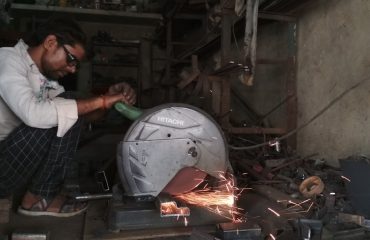Wind turbines, the silent giants of renewable energy, rely on complex and robust support systems to harness the power of the wind. These systems, often unseen but critically important, ensure the blades rotate smoothly, efficiently, and safely, maximizing energy output and minimizing downtime. This post will delve into the intricate world of wind turbine blade support systems, exploring their design, function, and the challenges faced in their development and maintenance.
1. The Nacelle: The Heart of the Support System
The nacelle serves as the central hub of the wind turbine, housing the gearbox, generator, and crucial control systems. Its primary role in blade support is to provide a stable and secure platform for the rotor assembly, which includes the blades, the hub, and the pitch system. The nacelle’s structural integrity is paramount; it must withstand significant forces generated by wind loads, blade rotation, and vibrations. Modern nacelles are typically constructed from steel or composite materials, chosen for their high strength-to-weight ratio and resistance to fatigue. The design incorporates features to minimize stress concentrations and ensure even load distribution across the entire structure. Precise alignment and stability within the nacelle are critical for optimal performance and longevity of the entire system.
2. Pitch and Yaw Systems: Controlling Blade Orientation
The pitch system allows individual blades to adjust their angle relative to the wind. This is crucial for optimizing energy capture at varying wind speeds and preventing damage during high-wind events. The pitch system typically comprises actuators, hydraulic or electric, connected to the blade roots. These actuators precisely control the blade pitch angle, allowing the turbine to feather its blades (turn them edge-on to the wind) to reduce power output or even shut down in extreme conditions. The yaw system, on the other hand, controls the overall orientation of the nacelle and rotor assembly, keeping the blades facing directly into the wind. This system often employs a large ring gear and pinion mechanism, driven by a motor, allowing slow but precise rotation of the nacelle to track the wind’s direction. Both systems are critical for maintaining optimal performance and protecting the turbine from damage.
3. Bearings: The Silent Guardians of Rotation
Bearings are the unsung heroes of wind turbine blade support, enabling the smooth and efficient rotation of the rotor. The main bearing, located at the base of the nacelle, supports the entire weight of the rotor assembly and takes the brunt of the axial and radial loads generated during operation. These bearings are typically large, high-capacity units, often employing advanced designs like tapered roller bearings or spherical roller bearings, to handle the substantial loads and high rotational speeds. Secondary bearings are also incorporated within the gearbox and other rotating components within the nacelle. The selection of bearings is crucial for both performance and longevity; high-quality bearings with advanced lubrication systems are essential to minimize wear and tear and ensure long operational life.
4. Hub and Blade Root Connections: Transferring Power
The hub acts as the central connection point for the blades, transferring the rotational forces generated by the blades to the main shaft. The design of the hub and the connection between the hub and the blades is critical for ensuring efficient power transfer and minimizing stress concentrations. Modern hubs are often constructed from steel or composite materials, with intricate designs to accommodate the forces and moments generated by the rotating blades. The blade root connection is equally critical, employing robust and reliable fastening mechanisms, often using bolts or specialized clamping systems, to securely attach the blades to the hub. These connections must withstand significant cyclic loading and fatigue, requiring high-strength materials and meticulous design to prevent failures.
5. Maintenance and Reliability: Ensuring Operational Efficiency
Regular maintenance and inspection of wind turbine blade support systems are essential for ensuring operational efficiency and preventing costly downtime. This includes routine inspections of bearings, lubrication systems, and structural components for signs of wear, tear, or damage. Advanced monitoring systems, utilizing sensors and data analytics, are increasingly being employed to detect potential issues before they escalate into major failures. Predictive maintenance strategies, based on real-time data analysis, are helping to optimize maintenance schedules and minimize downtime. Furthermore, research and development efforts are focused on improving the reliability and longevity of these systems, employing advanced materials, improved designs, and enhanced manufacturing techniques.
The intricate interplay of these components within the wind turbine blade support system highlights the sophisticated engineering required to harness the power of the wind. Continuous innovation in materials, design, and monitoring techniques is crucial for improving the efficiency, reliability, and longevity of wind turbines, enabling their continued contribution to a sustainable energy future.
SEO Keywords:
wind turbine blade support, wind turbine nacelle, wind turbine pitch system, wind turbine yaw system, wind turbine bearings




